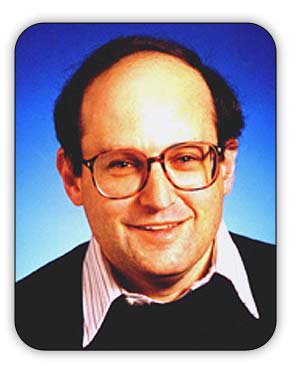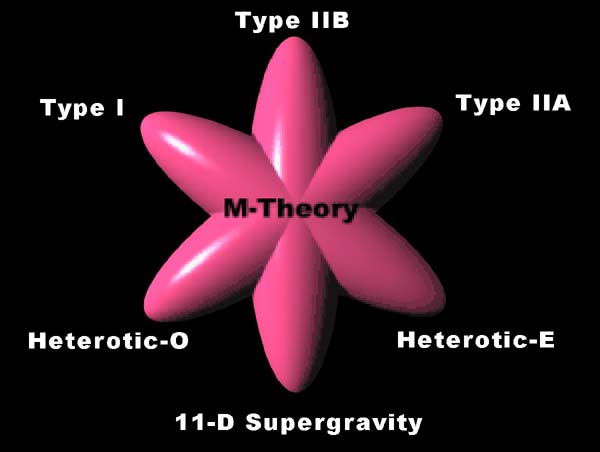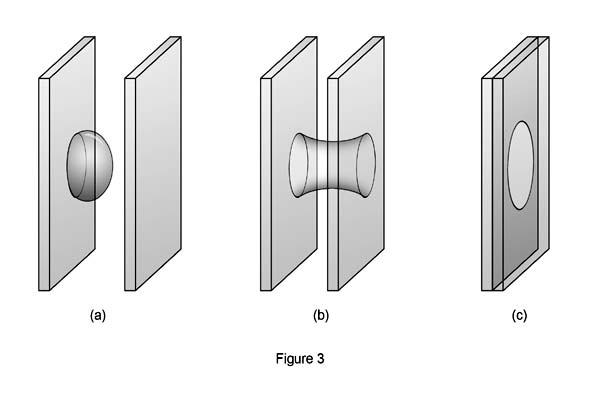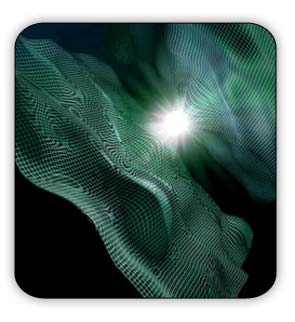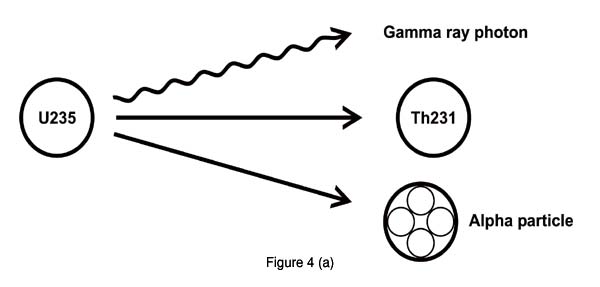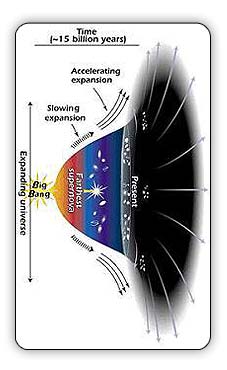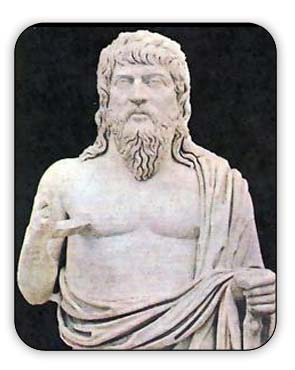 |
 |
 |
Volume
6 - Issue 02
FEBRUARY - 2008 |
IN QUEST OF INFINITY – 13 By Prof. G. Venkataraman
Loving Sai Ram and greetings from Prashanti Nilayam. This is instalment 13; do you realise we have been together for about a year now in our quest for Infinity? How much longer? Well, it all depends! You know this Infinity we are after is a pretty subtle affair and I really do not know how much longer we have to be in quest. But this much I can say for sure: No matter how long it takes, it would be exciting every inch of the way!
Just to refresh your memory, last time I was beginning to tell you how, at last, String Theory, a daring approach to the physics of elementary particles with hardly any practical predictions, is now being tried out by two enterprising and adventurous physicists, Paul Steinhardt of Princeton and Neil Turok of Cambridge to deal with problems of Cosmology. I hope you remember what the String Theory is all about. I have explained it all in QFI 10 and 11. You might remember that in String Theory particles are replaced by tiny, tiny strings, which can be open or closed loops. These strings vibrate and the different modes of vibrations are supposed to represent different particles. I also drew attention to the fact that the concept has undergone substantial extensions, with strings becoming membranes, not just two-dimensional membranes but three, four and higher dimensional membranes, all called branes for short. Thus it is we had all kinds of brane theories, with one of these, the M Theory as it has come to be called becoming a great favourite. I also pointed out that one reason why people are pushing the String Theories even though they have hardly made any prediction verified by experiments is the crucial fact that in String Theory, gravity finds a natural place instead of being pushed in and scotch-taped; and that indeed in a great plus. So much for a general recall. Towards the end of the last instalment, I mentioned that Paul and Neil came together after a long spell of sort of drifting towards each other, drawn by the idea of understanding how String Theory and the Big Bang could be brought together. They were inspired by the fact that people were trying to use the brane theory to explain inflation. Yes, it did seem possible to explain inflation using brane theories – there were actually many versions of them as I told you earlier – but soon it seemed that brane theories only flattered to deceive; their apparent utility was more an illusion; when actually applied to explain inflation, the results were not encouraging; the solution was elusive, to put it simply. At this point, I shall quote what Paul and Neil have to say their feelings were around 1999. “It is not clear why it is proving so difficult to merge M theory and the inflationary model. Perhaps there is a clever idea to be discovered that will suddenly turn the current morass into a beautiful resolution. …. Maybe this calls for a radical alternative that fits more naturally with the revised laws of physics. These thoughts were on the backs of our minds in the summer of 1999, when the two of us, together with our Russian colleague Valery Rubakov of the Institute of Nuclear Physics in Moscow, decided to organise an international workshop at the Issac Newton Institute in Cambridge. This was the fateful meeting that started us down the road to the cyclic model.” I am sure you do not quite follow the last remark about the “cyclic model” but don’t worry I shall take you through all of it. But just by way of a headline, I might mention that Paul and Neil were to revive a long-abandoned model of the Universe, namely the cyclic model first examined by Freidman way back in the twenties [see QFI –02]. Only, their cyclic model would be a new ‘Avatar’ placed within the context of brane theory! Sounds exciting, does it not? Let us now cover that territory slowly so that you are able to savour the full flavour of human ingenuity.
Remember Paul and Neil along with the Russian physicist Rubakov were the organisers of the Cambridge meeting. It was trying to bring together many cosmologists from all over, particularly many from Eastern Europe, many of whom had remained cut off from the West for years, thanks to the Cold War. The Cold War was now over but there then was a bit of that old feeling still persisting and creating problems, as in the Balkans. Nevertheless, it was far easier for scientists in the former Soviet block to travel and they came in large numbers to Cambridge to catch up and be refreshed. The general idea was to create some kind of a meeting ground between particle physicists and cosmologists. Today it might seem a pretty natural thing for the two groups to hang together, but often scientists tend to prefer their own select company; maybe they feel secure that way, but it often is the case that birds of a feather do flock together, at least where science is concerned. The organisers of the 1999 workshop in Cambridge definitely wanted to break such artificial walls and made a deliberate attempt to bring together two groups with different backgrounds and expertise so that they could address a major problem that bridged both their areas; the hope was that by bringing together complimentary skills, the problem could be cracked – at least an attempt could be made; fair enough. So, keeping all this in mind, the first thing the organisers did was to find a person who would be able to neatly summarise all the recent developments in brane physics to a bunch of cosmologists who had hardly heard abut String Theory – yes, believe it or not, people do live in water-tight compartments and could often be totally ignorant of what is happening across the corridor in their own university or lab; that is how focussed many experts tend to be; no time at all for anything except their own work. Is it any wonder that broken marriages are very common amongst scientists?! That is an entirely different problem, and we shall not get into that! OK, to get on with the story, the man selected to introduce the world of branes to the cosmologists was Bert Ovrut. Let us hear Paul and Neil tell us about what happened and how it happened. “We asked Burt Ovrut, a highly respected string theorist and long-standing colleague of Paul from his years at the University of Pennsylvania, to deliver a set of lectures on M Theory that would be accessible to cosmologists. Ovrut is a leading expert in some of the most mathematically formidable aspects of string and M theory. On this occasion, he stepped back form the technicalities and presented an inspiring overview of the theory’s essential elements. He began by reminding the audience that M theory unifies the five versions of string theory by showing they are all just different limits of a single master theory.
Furthermore, the master theory includes a sixth regime involving branes and no strings. Then, for the remainder of his talk, he concentrated on this sixth regime, the remarkable new geometrical picture discovered by Horava and Witten. He asserted that this version deserves special attention because it offers new insights into fundamental physics and may provide the most direct way to relate M theory to laboratory experiments. Ovrut is one of those physicists with artistic talent, so he was able to draw evocative pictures to illustrate Horava and Witten’s theory. He began with a drawing of two closely parallel sheets. Although the sheets appeared two-dimensional, Ovrut asked the audience to imagine that sheets were really nine-dimensional. (Time is an additional dimension, but, for simplicity, we will restrict ourselves to counting only the dimensions of space here.) The gap between the two sheets lies along the tenth dimension, the extra dimension that distinguishes the Horava-Witten theory from the other five string theories.”
I do hope you recall some of the stuff I presented earlier about the presence of extra dimensions in string theories [of various kinds], and how most of these space-like dimensions simply curl up and get out of view and day to day experience, a process that physicists describe via the word compactification [see QFI 10 & 11]. I am sure all this is driving you dizzy! But that is what happens when we have to use words in place of mathematics! In the language of mathematics [pretty fancy mathematics I should mention!] all this is perfectly precise; but when we try to use words, they fail to measure up to the demands of mathematics and one has to do a lot of hand-waving I am afraid. I mean it is like trying to describe Beethoven’s sublime music entirely in words! Sorry about that. Anyway, if you permit some hand-waving [there is no choice really!] then I can put it this way.
So what is the big deal? How does all this highly concocted picture help in anyway? Paul and Neil have the following response. They say the observable universe lies on one of the two branes; this is called “our braneworld”. The other brane is called the “hiddenbraneworld”. The gap separating the two braneworlds is separated by a tiny gap perhaps 10 -30 centimetres across. Over now to Paul and Neil: “According to the M theory, Ovrut explained, all the particles and forces we are familiar with, and even light itself, are confined to our braneworld. We are stuck like files on flypaper, and can never reach across the gap to the “hidden” world, which contains a second set of particles and forces with different properties from those in our world. Although we cannot touch or see anything on the hidden braneworld, its effect can be felt because gravity exists throughout space and can cross the gap between the branewords.” Where the last remark is concerned, I do hope you recall the figure below that was presented earlier.
So that is the picture that Ovrut painted at the Cambridge meeting of 1999, while introducing the strange world of branes to cosmology. The important point was that he was actually using the concept of branes not merely to explain features of elementary particles, which is what is usually done, but sketched how branes could be used by cosmologists. That certainly was an important step forward, as I shall soon describe. But before I get on to that story, let me make sure that I have not lost you at this point. So let me repeat what I said above in different set of words. You will notice that nothing has been said in the above about either the Big Bang or inflation. What has been done is to set the stage for all such discussion. The important thing is that 1) the Universe is described in terms of a brane, 2) that there is another universe, a companion of sorts, which, however, is hidden. 3) Nevertheless, this hidden universe, though invisible despite being very close, is capable of making itself felt via the gravitational force which can hop from one brane to another. That is the liberty gravitational force has because the loop describing the graviton is a closed loop. [See, QFI – 10; also Figure 2 above]. Let us go back to the double glass windows with an air gap in between. Suppose there is a soap bubble in the space between the two glass plates. Imagine the two plates are now progressively brought closer and closer. It is easy to see what would happen; that scenario is illustrated in the figure below:
The general idea that was being tried out was that some sort of physical connectivity gets established between the two branes when they come very close. Obviously, I have not indicated the details; they are complicated and I sure don’t even know what they are; but that does not matter. What matters is the physical picture. What I have outlined above is just the beginning. Let us move forward and see what more can happen if parallel brane worlds close by are made the starting point of a new cosmological approach; this is the approach taken by Paul Steinhardt and Neil Turok. I make a special mention of their work because they have revived one particular scenario for the evolution of the Universe that goes back a long time, received attention for a while and then got dumped because scientific evidence seemed to rule it out. You might ask, “If scientific evidence ruled out a particular possibility, how come it got revived?” Well, that is the interesting part and let me unravel the story bit by bit so that your curiosity is not satisfied till we reach the last reel!
What happened was something like this. While Ovrut unveiled a totally new picture of the Universe “living” in a brane rather close to a “hidden Universe” on another brane etc., Paul and Neil were wondering: “What if the two branes moved such that they actually collided? Could that generate a Big Bang?” In other words, these people now asked a new type of question: “How on earth did the Big Bang occur in the first place?” Lost in this question, which appears to have occurred to both Paul and Neil at the same time, they hardly paid any attention to what Ovrut was saying. They were just waiting for the talk to end, and when that happened, they rushed towards the speaker like many others did. While the others sought all sorts of clarifications concerning what Ovrut said during his talk, these two aired their view and simply asked: “Do you think the Big Bang could have been the result of a brane-brane collision?” Ovrut was surprised by the idea but did not at all think it was either crazy or outrageous. In fact, Ovrut wanted to discuss the idea further but a social engagement came in the way. As often happens during such meetings when the agenda tends to be heavy, the organisers slip in some cultural items, parties and the like to lighten the atmosphere a bit. On this occasion, arrangements had been for the participants to travel to London to see a popular play there. So the three had to leave immediately; however, they managed to travel together and during the train ride [from Cambridge to London], they argued excitedly about “how a braney big bang might work.” Over to Paul and Neil: “We could see right away that brane collisions are unavoidable in M theory – nothing prevents two brane worlds from running into each other. Also, a brane collision would fill the branes with a nearly uniform density of matter and radiation. The details would be hard to calculate, but the physical picture was compelling. If M theory was right, the big bang just had to be a brane collision, we sensed. But if this was true, there would be huge implications.” It is one thing to have an exciting discussion during a train ride and toss ideas back and forth and quite another to produce a model with calculations, numbers and so forth, which is what the scientific community would ultimately look at before accepting or rejecting the idea. As the two say summarising their feelings even as the train reached into London, “Still, as exhilarated as we were by these ideas during the train ride to London, a great deal of work lay ahead before they could be turned into a viable model. Horava and Witten had assumed a static, unchanging arrangement of branes, because this vastly simplified their analysis. The dynamic situation of colliding braneworlds was much harder to describe, and most of the theoretical tools and tricks that had been developed would be useless in this context. Nevertheless, we now had a tantalizing vision of a new cosmological scenario that went well beyond the inflationary model and employed the full power of M theory and branes to describe the big bang.” So there it was at that point. A new idea, an interesting idea, and a bold idea too. So far, so good, but at the end of the day, physicists want calculations, and numbers that can be tested against experiments. That said, it is not always easy to follow up an idea with detailed calculations. Over a century, physics has become difficult on two fronts; firstly, on the ideas side, radical ideas began to make an entry, and people had to learn to assimilate bold new ideas. Secondly, physicists also had to equip themselves with new mathematical tools they were totally unfamiliar with. For example, when Einstein came up with General Relativity in 1915, he had to seek the help of mathematician Grossman to help him out with solving the equations he had proposed! So it was many times. Often, getting hold of the right equation and the mathematical strategy was a hard struggle; it had to wait for decades till a lot of facts to fall into place. Paul and Neil put this matter into perspective with respective their own ideas.
“We agreed not to discuss these initial ideas with others yet; rather, we would develop them in private and propose new cosmological model only if it showed signs of success. Otherwise, the negative response of other theorists to a sketchy idea could be so strong that the model might be buried before it had a chance to breathe. The criticisms could be anticipated. String theorists would say the work was premature and M theory was still too poorly understood to be applied to cosmology. And most of the cosmologists had already nailed their colours to inflation’s mast: many would be sure to resist considering an alternative. To be accepted as a serious rival, the model would have to match inflation’s successes. In particular, it would have to provide an alternative explanation for the nearly scale-invariant fluctuations that seed the formation of galaxies.” I am giving the inside picture instead of merely the finished product so that you get the feel for the initial excitement, the subsequent hesitation, the long grind thereafter, sweat, tears, persistence etc., that invariably goes in before there is success. When the newspapers headline a great discovery, we are hardly aware of the tension that lies behind. Basically, Paul and Neil were trying to marry the brane picture to early cosmology and come up with a model which would make inflation unnecessary, but deliver nevertheless all that inflation does and much more perhaps! Sounds like an election promise? Well, let us see. But first we must get equipped some background, and the rest of this instalment would be devoted to that. I would first like to say something about what is often quoted as the age of the Universe. I have myself have done this and even presented a number that is supposed to be fairly accurate, precise and all that. But then, what exactly does this term age of the Universe mean? Any fine print or catches there? That is the first topic I would like to discuss below. Next I would like to introduce you to the concept of what is called the cyclic model of the Universe, because that is what is going to occupy us for a while in the immediate future. Over now to the age business. By the age of the Universe, we normally mean the time elapsed between the Big Bang and the present. This definition therefore implicitly assumes that there was a Big Bang! This is something many do not notice; the point is, however, important because what if someone does not believe in the Big Bang? Let us start with the basic question: “Is there any meaningful way of talking about the age of the Universe without bringing the Big Bang into the picture?” There sure is, and it is an operational method. We simply say, “The Universe must be at least as old as the oldest object in it.” This is not as silly an idea as it might sound. There are many old entities in this Universe whose age we can determine in an independent manner, without any reference to Big Bang etc. Use of these suggestive indicators gives us a meaningful way of putting a limit on the age of the Universe; we can say, “The Universe must be at least so many years old.” Got the idea? OK, now there are three ways in which this idea can be implemented:
Let me explain. As you might be aware, chemists tell us that there are 92 elements that are found in Nature, many of which are radioactive. Now what does one mean by saying uranium is radioactive? It simply means this: If you have a bunch of uranium atoms, as say in a piece of uranium metal, the you would find that radiations come from this piece of uranium metal and the emission is random. Let me be more specific. Thanks to the atom bomb, nuclear proliferation and all that, I am sure you have heard of uranium 235 and uranium 238. These refer to two different types of nuclei [called isotopes of uranium], both of which are uranium as far as the chemists are concerned; however, where nuclear physicists are concerned, the two nuclei are quite different indeed, as different as war and peace if I may put it that way! If there was no uranium 235 in Nature, the bomb that wiped out Hiroshima could not have been made! OK, but what has all that got to do with the age of the Universe? I am coming to that! Now when I say that uranium 235 is radioactive, it means that if there are a bunch of uranium 235 nuclei then once in a while, one of these nuclei would emit what is called an alpha particle, which is nothing but the nucleus of a helium atom. Now out the big bunch of 235 nuclei, which is the one which emits? No one can say; that is what random emission is all about. Not only that, let us say that uranium 235 nucleus A emits an alpha particle now; let us call this time t = 0. Five seconds later, another uranium 235 nucleus that we shall call B emits an alpha particle. We check our clock; it shows 5 seconds have passed. Question: Can we say that the next emission would occur at time 10 seconds? No! The next emission could occur at time t = 6 seconds, time t = 14 seconds, t = 7.7 seconds, something we cannot predict! Have the uranium nuclei become crazy? Do they have no discipline?
You see, certain things are random in Nature; that is the way it is; however, that does not mean that nothing is predictable about random processes. In the case of radioactive decay of uranium nuclei [the 235 species] for example, we can say that if we start with N such nuclei now, then after 704 million years, we can expect to find only about [N/2] uranium 235 nuclei left; the rest would have emitted alpha particles and decayed to what is called a daughter nuclei. To make it a bit more meaningful, let us say we have a trillion [1012] such nuclei now, then after 704 million years, only about 0.5 trillion would be left; not exactly half a trillion but more or less. If we start with just 1000, we can similarly say only about 500 would be left although the % error in this estimate would be much higher. All this digression was meant to introduce you to the term half-life, which, for U 235, is about 704 million years. OK, all this is fine but what does all this mean as regards the age of the Universe? That is what I am coming to. The basic game is the following. Scientists know quite a lot about a thousand or so radioactive nuclei and their half-lives. From a study of stars etc, they also know that in many very old stars in which these nuclei were first produced, some of which were produced with equal abundance. However, because of their very different half-lives, more of one species survived rather than the other. So this is what scientists do. They say: “Let us consider two candidate nuclei, X and Y. Long, long ago when they first were produced in the Universe, they appeared with equal abundance; but on account of their very different half-lives they decayed at different rates.
Therefore, one species has more survivors today on our solar-system/earth [which is relatively young compared to the Universe], than there were at start. Knowing the ratio of survivors and the half-lives, it is not a big deal to work out how many years must have passed since the original co-production of the two species X and Y. The actual difficulty lies in making accurate measurements but today’s fancy tools allow that. Proceeding this way, they finally say, “Well, we reckon the Universe must be about 15 billion years old, give or take about 2 billion years!” Mind you, this is only a way of putting what is called a bound on the age; yet it is very useful. I will not go into the other two methods I listed them above because they are sort of in the same spirit, but instead shall turn to another method which relies on observations of the Cosmic Microwave Background [CMB], concerning which I have said a lot in earlier issues of H2H. Basically this method proceeds as follows: “Today, the Universe is filled more or less uniformly [barring of course some vital and critical fluctuations], with radiation. We measure the temperature of this radiation very accurately and all sorts of related data. Next we go back to Hubble’s old discovery that the Universe is expanding. Today, we can measure this expansion rate fairly accurately. So we combine all this and argue: ‘Well, if this is the current temperature now and this is the expansion rate now, then how long ago must this expansion have started for the temperature to have the value it now has?’” That, roughly is the way this game is played. Using such an approach, the NASA Wilkinson Microwave Anisotropy Probe [WMAP] Project team estimates the age of the Universe to be (13.7 ± 0.2) x 109 years. That is, the Universe is about 13.7 billion years old with an uncertainly of about 200 million years. This is the number most often quoted these days, and it is a pretty good estimate I would say; however, one must be careful about what exactly this means.
So you see, there are all kinds of ifs and buts, if one wants to be very careful, and scientists often are that way! Why did I bring in all this? Because they all are relevant to us. In much of what I have said thus far, including about the history of the Universe and the fate it might face, I have said hardly anything about a model of existence called the Cyclic Model. Basically, in this model, the Universe is born, dies, is born again, dies again, and so on; I suppose you get the idea! Rather like humans, it is not? Well interestingly this is how ancients in many lands thought about it all, and Paul Steinhardt and Neil Turok say something very interesting about these ancients concepts. This is what they say: “Ancient Hindu cosmology presents a remarkably detailed and quantitative version of cyclic evolution. The full picture has cycles within cycles within cycles, where each level of cycle has a different duration. The levels correspond to various timescales in the lifespan of Brahma, the god of creation. For example, one kind of a cycle corresponds to a day and night in Brahma’s life, another to a year, yet another to one hundred years, and so on. Converted to Earth years, some of these levels have surprisingly similar timescales of interest to contemporary cosmology. A day and night in the life of Brahma lasts a kalpa, a period of 8.64 billion years, roughly the duration of the matter-dominated epoch in modern cosmology, during the period in which galaxies formed. The Vishnu Puranas say that each of these cycles is followed by a drought that lasts until all the waters dry up. In modern cosmology, matter domination is followed by dark energy domination during which no new galaxies form. The next level of cycle, corresponding to a year of Brahma or 360 kalpas, last 3.11 trillion years. The duration is roughly that of a single cycle in the [current versions of] the cyclic model. The lifetime of Brahma is a factor of one hundred longer, after which the Universe takes a respite. Exactly what happens after that is less clear. There have been numerous Brahmas before and there will be numerous ones to follow. The Hindu texts do not say how the interval between Brahmas is. The evolution may be cyclic or sporadic. In the West, cyclical cosmology was a dominant idea for nearly six centuries, beginning around 500 B.C. The concept can be traced back to a disagreement between two of the earliest known Greek philosophers, Parmenides of Elea and Heraclitus of Ephesus. Parmenides’ view, which Plato greatly admired, was that ideas are real and sensations are illusory. If thought is reality, then anything one can conceive must exist. Parmenides reasoned that since you cannot conceive something “not existing” without first thinking of the thing itself, (which means it already exists, then it is logically impossible for existence to have a beginning or an end. Hence, he concluded, everything endures and nothing changes.
Heraclitus held the opposite view. “All is flux” was the dictum, meaning that everything changes and nothing endures. The goal of philosophers, he argued, should be to understand how things change. Today, the Heraclitean point of view is recognised as underlying modern science, economics, politics and history. Following Heraclitus, the Stoics introduced the concept of ekpyrosis, from the word meaning “out of fire”…….. The Greek notion was that the Universe begins and ends in a gigantic conflagration, with a period of normal evolution in between. The concept had many variants. There could be one conflagration, or an infinite number of them. They could be regular and sporadic or regular and periodic. The cycles could be exact repeats of history or only statistically similar. In the periodic version, Cicero called the cycles annusmagnus, or “great year,” and it was calculated to have the duration of ten to twenty thousand years. In his treatise ON the Nature of Gods, Cicero explained, “There will ultimately occur conflagration of the whole world… nothing will remain but fire, by which, as a living being and a god, once again a new world may be created and the ordered universe restored as before.” The cyclic view became less popular in Europe as Christianity took hold, due in large part to the interpretation of the Book of Genesis by early Christian theologians. Many today read translations of the opening lines and interpret them to be as describing a universe that is created from nothing in a singular event. In the original Hebrew, though, the meaning is ambiguous at best. Rabbinic scholars are not sure whether “heaven and earth” refers to the entire universe of just the Earth. And a common interpretation is that this creation was from pre-existing material, meaning space, time, matter and energy existed before the moment of creation. Some rabbinic interpretations even envisage that worlds have been created repeatedly, with earlier versions having been destroyed because their Maker found them unsatisfactory. In truth, though, these cosmological issues have never been considered central to Jewish religious thinking.
In Christianity, scholars have tended to link the origin of the universe more closely to the foundations of the religion, which is perhaps why there has been greater tension between science and this faith, compared to other religions. For example, Saint Augustine argued strongly for a created universe, ascribing it an age of five thousand years. And he rejected any interpretations of biblical passages that suggest a more enduring existence. In his Confessions (Book XI, chapter 12 ), he wrote of the first lines of Genesis. “For the man who says, ‘What did God do before He made heaven and earth?’ I do not give the answer that someone is said to have given in jest: ‘He was preparing hell, just for those who pry too deeply.’ It is one thing to see the answer; it is another to laugh at the questioner–and another for myself I do not answer these thing thus. More willingly would I have answered, ‘I do not know what I do not know’ than cause one who asked a deep question to be ridiculed–and by such tactics gain praise for a worthless answer. Rather, I say that thou, our God, art the Creator of every creature. And if in the term ‘heaven and earth’ every creature is included, I make bold to say further: ‘Before God made heaven and earth, he did not make anything at all.’” Although many Christian theologians adopted Saint Augustine’s view, the concept of a cyclic universe retained some popularity. By the nineteenth century, the idea began to appear more frequently, even among popular writers. Edgar Allen Poe wrote an essay entitled “Heureka” in which he proposed a specific “model” of the universe that is remarkably like the ancient explosion of some simple, uniform state of matter in “one instantaneous flash.” These initial atoms are blown apart by expansion but then are drawn together by an attractive force that causes them to collapse into a uniform initial state again, from which a new explosion arises. The German philosopher Friedrich Nietzsche also advocated a repeating universe, but his arguments in support of the idea were different from those of the early Greek philosophers. He thought that since there is no end to time, and presumably only a finite number of possible events and things, everything now existing must recur. Nietzsche’s model of “eternal recurrence” was popular in the late nineteenth century and perhaps even stimulated the thinking of mathematical physicists like Ludwig Boltzmann and Henri Poincare in their studies of heat and dynamical systems. Boltzmann’s and Poincare’s ideas continue to influence modern cosmology. As a final comment on all this, I recall way back in the eighties when I was in the US , there was a popular TV series called COSMOS, narrated by the famous Carl Sagan. In one of the episodes, Carl Sagan discusses the Cyclic Model and this scene is shot in Mahapalipuram, the famous tourist spot south of Madras, where many Pallava architectural relics can be found. And Sagan refers in detail to the Cosmic Dance of Shiva in relation to the oscillatory rhythm of the Universe. I was very struck by the analogy he made but then, this is what the ancients of India said too. Subsequently, I learnt many other Western physicists also referred to the beautiful analogy and as if to bring this to the constant attention of the leading physicists of the world, the Government of India donated a beautiful bronze statue of Dancing Shiva to CERN, the worlds biggest nuclear lab in Geneva , spanning actually two countries, Switzerland and France . A devotee engaged in documentary film making in Zurich in Switzerland specially went to Geneva to take pictures for us of this gift from the People of India to the Scientists of the World and we reproduce that picture below. Nice, is it not?!
Be with you again next month. In the meantime, all the best. Jai Sai Ram.
|
|||||||||||||||||||||||||||||||||||||||||||||||||||||||||||||||||||||||||||
Vol 6 Issue 02 - FEBRUARY 2008
|
Best viewed in Internet Explorer - 1024 x 768 resolution. |


